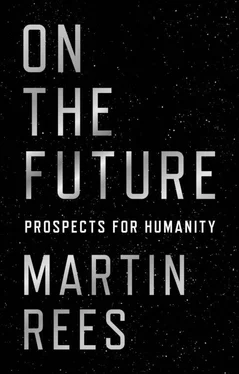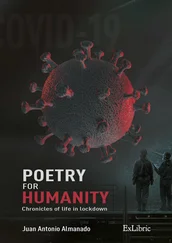The advances in medicine and surgery already achieved—and those we can confidently expect in the coming decades—will be acclaimed as a net blessing. They will nonetheless sharpen up some ethical issues—in particular, they will render more acute the dilemmas involved in treating those at the very beginning and the end of their lives. An extension of our healthy lifespan will be welcome. But what is becoming more problematic is the growing gap between how long we will survive in healthy old age and how much longer some kind of life can be extended by extreme measures. Many of us would choose to request non-resuscitation, and solely palliative treatment, as soon as our quality of life and our prognosis dropped below a threshold. We dread clinging on for years in the grip of advanced dementia—a drain on resources, and on the sympathy of others. Similarly, one must question whether the efforts to save extremely premature or irreversibly damaged babies has gone too far. In late 2017, for instance, a team of UK surgeons tried—with immense commitment and dedication—to save an infant born with her heart outside her body.
Belgium, Holland, Switzerland, and several US states have legalised ‘assisted dying’—thereby ensuring that a person of sound mind with a terminal disease can be helped to a peaceful death. Relatives, or physicians and their helpers, can carry out the necessary procedures without being threatened with criminal prosecution for ‘aiding a suicide’. Nothing similar yet has parliamentary approval in the United Kingdom. The objections are based on fundamental religious grounds, on the view that participation in such acts is contrary to a doctor’s ethical code, and on worries that vulnerable people might feel pressured to take this course by their families or by undue concern about placing burdensome demands on others. This inaction in the United Kingdom persists, despite 80 percent public support for ‘assisted dying’. I am firmly in that 80 percent. Knowledge that this option was available would comfort many more than the number who would actually make use of it. Modern medicine and surgery obviously benefit most of us, for most of our lives, and we can expect further advances in the coming decades that can prolong healthy lives. Nonetheless, I expect (and hope) there will be enhanced pressure for legalising euthanasia under regulated conditions.
Another consequence of medical advances is the blurring of the transition between life and death. Death is now normally defined as ‘brain death’—the stage when all measurable signs of brain activity become extinguished. This is the criterion transplant surgeons use in deciding when they can properly ‘harvest’ a body’s organs. But the line is being blurred further by proposals that the heart can be artificially restarted after ‘brain death’, simply to keep the targeted organs ‘fresh’ for longer. This introduces further moral ambiguity into transplant surgery. Already, ‘agents’ are inducing impoverished Bangladeshis to sell a kidney or other organ that will be resold with a huge markup to benefit wealthy potential recipients. And we’ve all seen distressing TV footage of a mother with a sick child pleading that she is ‘desperate for a donor’—desperate, in other words, for another child to die, perhaps from a fatal accident, to supply the needed organ. These moral ambiguities, together with a shortage of organ donors, will continue (and indeed be aggravated) until xenotransplantation—harvesting organs for human use from pigs or other animals—becomes routine and safe. Better still (though more futuristically), techniques akin to those being developed in order to make artificial meat could enable 3D printing of replacement organs. These are advances that should be prioritised.
Advances in microbiology—diagnostics, vaccines, and antibiotics—offer prospects of sustaining health, controlling disease, and containing pandemics. But these benefits have triggered a dangerous ‘fight back’ by the pathogens themselves. There are concerns about antibiotic resistance whereby bacteria evolve (via speeded-up Darwinian selection) to be immune against the antibiotics used to suppress them. This has led, for example, to a resurgence in tuberculosis (TB). Unless new antibiotics are developed, the risks of (for instance) untreatable postoperative infections will surge to the level of a century ago. In the short term, it’s urgent to prevent the overuse of antibiotics—for instance, in cattle in the United States—and to incentivise the development of new antibiotics, even though these are less profitable to pharmaceutical companies than the drugs that control long-term conditions.
And studies of viruses, carried out in the hope of thereby developing improved vaccines, have controversial aspects. For instance, in 2011, two research groups, one in Holland and another in Wisconsin, showed that it was surprisingly easy to make the H5N1 influenza virus both more virulent and more transmissible—in contrast to the natural trend for these two features to be anticorrelated. The justification adduced for these experiments was that by staying one step ahead of natural mutations, it would be easier to prepare vaccines in good time. But, to many, this benefit was outweighed by the enhanced risks of unintentional release of dangerous viruses, plus the wider dissemination of techniques that could be helpful to bioterrorists. In 2014, the US government ceased funding these so-called gain of function experiments—but in 2017 this ban was relaxed. In 2018 a paper was published reporting the synthesis of the horsepox virus—with the implication that a smallpox virus could be similarly synthesised. [4]Some questioned the justification for this research, carried out by a group in Edmonton, Alberta, because a safe smallpox virus already exists and is stockpiled; others argued that even if the research were justifiable, publication was a mistake.
As already mentioned, experiments using CRISPR/Cas9 techniques on human embryos raise ethical concerns. And the rapid advance of biotech will bring up further instances where there’s concern about the safety of experiments, the dissemination of ‘dangerous knowledge’, and the ethics of how it’s applied. Procedures that affect not just an individual but his or her progeny—altering the germ line—are disquieting. There has, for instance, been an attempt, with 90 percent success, to make sterile, and thereby wipe out, the species of mosquito that spreads the Dengue and Zika strains of virus. In the United Kingdom, a ‘gene drive’ has been invoked to remove grey squirrels—regarded as a ‘pest’ that threatens the cuddlier red variety. (A more benign tactic is to engineer the red squirrel so that it can resist the parapoxvirus that is spread by the grey squirrels.) Similar techniques are being proposed that could preserve the unique ecology of the Galapagos Islands by eliminating invasive species—black rats in particular. But it’s worth noting that in a recent book, Inheritors of the Earth , Chris Thomas, a distinguished ecologist, argues that the spread of species can often have a positive impact in ensuring a more varied and robust ecology. [5]
In 1975, in the early days of recombinant DNA research, a group of leading molecular biologists met at the Asilomar Conference Grounds in Pacific Grove, California, and agreed on guidelines defining what experiments should and should not be done. This seemingly encouraging precedent has triggered several meetings, convened by national academies, to discuss recent developments in the same spirit. But today, more than forty years after the first Asilomar meeting, the research community is far more broadly international, and more influenced by commercial pressures. I’d worry that whatever regulations are imposed, on prudential or ethical grounds, cannot be enforced worldwide—any more than the drug laws can, or tax laws. Whatever can be done will be done by someone, somewhere. And that’s a nightmare. In contrast to the elaborate and conspicuous special-purpose equipment needed to create a nuclear weapon, biotech involves small-scale dual-use equipment. Indeed, biohacking is burgeoning even as a hobby and competitive game.
Читать дальше


![Мартин Рис - Всего шесть чисел. Главные силы, формирующие Вселенную [litres]](/books/414169/martin-ris-vsego-shest-chisel-glavnye-sily-formir-thumb.webp)









